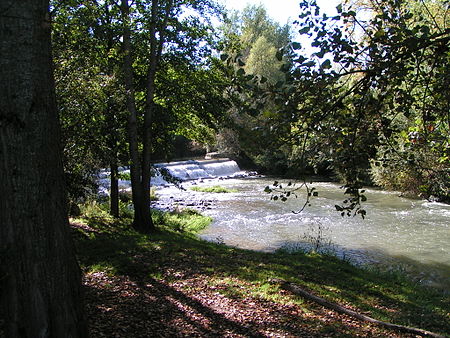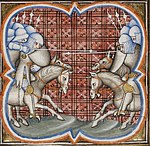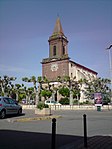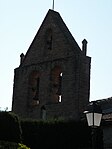Louge
France river stubsHaute-Garonne geography stubsRivers of FranceRivers of Haute-GaronneRivers of Hautes-Pyrénées ... and 2 more
Rivers of Occitania (administrative region)Tributaries of the Garonne

The Louge (French pronunciation: [luʒ]; Occitan: Loja) is a 100.0 km (62.1 mi) long river in southwestern France, left tributary of the Garonne. Its source is in the département of Hautes-Pyrénées, near Lannemezan. It flows generally north-northeast through the following départements and towns: Hautes-Pyrénées: Haute-Garonne: Le Fousseret, Peyssies, Lavernose-Lacasse, Muret.It flows into the Garonne at Muret.
Excerpt from the Wikipedia article Louge (License: CC BY-SA 3.0, Authors, Images).Louge
Avenue de l'Europe, Muret
Geographical coordinates (GPS) Address Nearby Places Show on map
Geographical coordinates (GPS)
| Latitude | Longitude |
|---|---|
| N 43.461944444444 ° | E 1.3327777777778 ° |
Address
MOCK (muret olympique canoë kayak)
Avenue de l'Europe
31600 Muret
Occitania, France
Open on Google Maps








